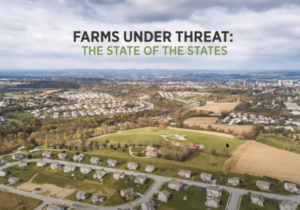State of the State of Farmland in the US
go.ncsu.edu/readext?699917
en Español / em Português
El inglés es el idioma de control de esta página. En la medida en que haya algún conflicto entre la traducción al inglés y la traducción, el inglés prevalece.
Al hacer clic en el enlace de traducción se activa un servicio de traducción gratuito para convertir la página al español. Al igual que con cualquier traducción por Internet, la conversión no es sensible al contexto y puede que no traduzca el texto en su significado original. NC State Extension no garantiza la exactitud del texto traducido. Por favor, tenga en cuenta que algunas aplicaciones y/o servicios pueden no funcionar como se espera cuando se traducen.
Português
Inglês é o idioma de controle desta página. Na medida que haja algum conflito entre o texto original em Inglês e a tradução, o Inglês prevalece.
Ao clicar no link de tradução, um serviço gratuito de tradução será ativado para converter a página para o Português. Como em qualquer tradução pela internet, a conversão não é sensivel ao contexto e pode não ocorrer a tradução para o significado orginal. O serviço de Extensão da Carolina do Norte (NC State Extension) não garante a exatidão do texto traduzido. Por favor, observe que algumas funções ou serviços podem não funcionar como esperado após a tradução.
English
English is the controlling language of this page. To the extent there is any conflict between the English text and the translation, English controls.
Clicking on the translation link activates a free translation service to convert the page to Spanish. As with any Internet translation, the conversion is not context-sensitive and may not translate the text to its original meaning. NC State Extension does not guarantee the accuracy of the translated text. Please note that some applications and/or services may not function as expected when translated.
Collapse ▲ North Carolina ranks 2nd nationwide for the amount of acres converted to a developed use for the years 2001 – 2016, with only Texas beating us out in this infamous ranking. The American Farmland Trust recently released this fascinating webinar that discusses 1) the drivers behind the conversion of farmland to developed uses (Low Density Residential Land Use takes the cake), 2) an introduction to the most comprehensive spatial analysis of farmland in the lower 48 states that has ever been done, and 3) a discussion around farmland protection and farm viability policies (including FarmLink Programs) in each state.
North Carolina ranks 2nd nationwide for the amount of acres converted to a developed use for the years 2001 – 2016, with only Texas beating us out in this infamous ranking. The American Farmland Trust recently released this fascinating webinar that discusses 1) the drivers behind the conversion of farmland to developed uses (Low Density Residential Land Use takes the cake), 2) an introduction to the most comprehensive spatial analysis of farmland in the lower 48 states that has ever been done, and 3) a discussion around farmland protection and farm viability policies (including FarmLink Programs) in each state.
From 2001 – 2016, 133 acres/day, or 731,600 acres of NC’s agricultural land was converted or compromised.
American Farmland Trust recommends a multi-faceted approach including Purchase of Agricultural Easements, Local Land Use Planning, Property Tax Use Assessments, Agricultural Districts, FarmLink Programs, and Leasing of State Owned Farmland. Continuing to push and develop these program and policies to take the pressure off of developing our best farmland will boost farm viability, encourage young people to stay involved in agriculture, and increase our resilience. As we face more uncertainties in our world including global pandemics and climate change, its vital that we secure a safe and reliable food supply for current and future generations. At the current rate of land conversion in North Carolina, by the year 2100 we will have converted 1/3 of our most important farmlands to a developed use.
View the YouTube recorded version of the presentation.
You won’t regret being more informed!


